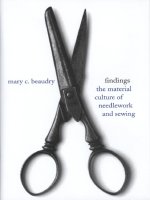yale university press bound together how traders preachers adventurers and warriors shaped globalization may 2007
Bạn đang xem bản rút gọn của tài liệu. Xem và tải ngay bản đầy đủ của tài liệu tại đây (2.07 MB, 412 trang )
Praise for Bound Together
“Given the avalanche of books on globalization it is reasonable to assume that
for now the subject has been exhausted. This assumption crumbles after one
reads Nayan Chanda’s masterful analysis and discovers that this gifted writer
has added a new and important layer to our understanding of why and how
we are all ‘Bound Together.’ A must read.”
—Moisés Naim, editor in chief, Foreign Policy
“Bound Together is destined to be a classic book for the twenty-first century.
Author Nayan Chanda has combined deep and far-ranging scholarship with
a journalist’s touch for storytelling to craft an enthralling narrative of hu-
mankind from our birth in Africa to our addiction to the Internet. Chanda is
a true global citizen. His book should be read in every home, school, busi-
ness, and embassy in the world, and become a vital part of our common in-
tellectual heritage.”
—Ambassador Derek Shearer, Stuart Chevalier Professor of
Diplomacy and World Affairs and Director of Global Affairs,
Occidental College
“Chanda’s account of globalization is a breath of fresh air. His treatment of the
topic, from its origins with the first humans out of Africa to its most recent
appearance in financial markets, is comprehensive, informed, and judicious.
Refreshingly personal and humorous, it is probably the best single-volume
work on world/global history now available, and a must for all students of the
subject. Along the way, India, for example, becomes as much a focus as Eu-
rope in the overall story.”
—Bruce Mazlish, professor of history emeritus, MIT
“It is, in my view, a wonderful read—incredibly informative, insightful, and
written with energy, eloquence, and simplicity. The themes are fresh and the
organization especially interesting. Some of the great strengths of the book
are the way he relates history to the present, the global perspective through-
out, the broader-than-economics focus, and the way he describes the overlap
of forces that have led to the world we now live in. My guess is that this book
will be widely read and have a special place on any bookshelf that contains
works on globalization.”
—Jeffrey Garten, former dean and Juan Trippe Professor in the
Practice of International Trade, Finance, and Business, Yale School of
Management
Bound Together
Bound Together
How Traders, Preachers, Adventurers, and
Warriors Shaped Globalization
Nayan Chanda
Yale University Press
New Haven and London
A Caravan book. For more information, visit www.caravanbooks.org
Copyright © 2007 by Nayan Chanda.
All rights reserved.
This book may not be reproduced, in whole or in part, including illustrations,
in any form (beyond that copying permitted by Sections 107 and 108 of the U.S.
Copyright Law and except by reviewers for the public press), without written
permission from the publishers.
Set in Adobe Garamond and Stone Sans types by The Composing Room of
Michigan, Inc.
Printed in the United States of America.
Library of Congress Cataloging-in-Publication Data
Chanda, Nayan.
Bound together : how traders, preachers, adventurers, and warriors shaped
globalization / Nayan Chanda.
p. cm.
Includes bibliographical references and index.
isbn 978-0-300-11201-6 (clothbound : alk. paper)
1. Social evolution. 2. Commerce—History. 3. Intercultural communica-
tion—History. 4. Culture diffusion—History. 5. Globalization—History.
I. Title. II. Title: How traders, preachers, adventurers, and warriors shaped
globalization. III. Title: Traders, preachers, adventurers, and warriors shaped
globalization.
hm626.c45 2007
303.48209—dc22
2007000430
A catalogue record for this book is available from the British Library.
ø™ The paper in this book meets the guidelines for permanence and durability
of the Committee on Production Guidelines for Book Longevity of the Council
on Library Resources.
10987654321
To the memory of my parents
and
To my other parents, Amarjit and Bhagwant
Contents
Introduction, ix
1 The African Beginning, 1
2 From Camel Commerce to E-Commerce, 35
3 The World Inside, 71
4 Preachers’ World, 105
5 World in Motion, 145
6 The Imperial Weave, 175
7 Slaves, Germs, and Trojan Horses, 209
8 Globalization: From Buzzword to Curse, 245
9 Who’s Afraid of Globalization?, 271
10 The Road Ahead, 305
Chronology, 321
Acknowledgments, 331
Notes, 335
Index, 373
Introduction
ix
A few days after my wife and I had moved into our home in New
Haven, Connecticut, an electrician came to fix some electrical outlets
that weren’t working. Jerry was middle-aged and friendly, and he
asked me what I did at Yale. When I mentioned my affiliation with the
Yale Center for the Study of Globalization, he seemed stunned, as if I
had just confessed to being a charter member of a Colombian drug
cartel. “Oh! God help you,” he muttered. Puzzled, I asked what was
wrong. Jerry was clearly surprised to meet someone who he thought
actually worked for globalization. “Isn’t it true that globalization de-
stroys the rain forest?” he asked by way of explanation. My protesta-
tion that the closest I had ventured to the Amazon was to order a few
books did little to help my standing.
But Jerry’s reaction had raised important questions. What precisely
is globalization, and why is it accused of damaging the rain forest? It
seems to have appeared out of nowhere, and now it is everywhere. Al-
most every problem—even extraordinary developments—has been
laid at the door of this phenomenon called globalization. Its role in
damaging rain forests is perhaps the easiest to understand. Forests are
being cleared mainly to create farmland for the world’s growing population.
Rising international trade and the growing demand for construction materials
and furniture have brought traders and loggers into the act. To answer Jerry’s
concerns, I thought it was important to understand who the globalizers are,
what they are doing and why, and how long they have been at it.
Since the word globalization appeared in the dictionary, its meaning has un-
dergone a massive transformation. Just two of the dozens of definitions of glob-
alization illustrate the problem in grappling with this phenomenon. Writing in
the Encyclopedia Britannica, James L. Watson defines globalization in cultural
terms—as “the process by which the experience of everyday life, marked by the
diffusion of commodities and ideas, can foster a standardization of cultural ex-
pressions around the world.” The official World Bank definition of globaliza-
tion is stated, not surprisingly, in purely economic terms, as the “freedom and
ability of individuals and firms to initiate voluntary economic transactions
with residents of other countries.”
1
Left-wing critics, echoing Karl Marx’s ob-
servation about the “werewolfish hunger” of capitalism reaching the four cor-
ners of the world, see globalization as synonymous with expansionist and ex-
ploitative capitalism. Looking at globalization through the prism of business
and economics helps one to understand the Internet, the mobile phone, and
the cable TV-connected world we inhabit, but it does not explain how human
life was globalized long before capitalism was formulated or electricity in-
vented.
Many recent books, notably Thomas L. Friedman’s The World Is Flat, have
explained how mobile capital, trade, and technology have created today’s in-
stantaneously connected, interdependent world. Economic historians like
Kevin O’Rourke and John G. Williamson have shown how the transportation
revolution in the late nineteenth century kicked off large-scale trade and mi-
gration, laying the foundation for the current era of globalization. In fact, in
their view, globalization began when large-scale trading brought about a con-
vergence of commodity prices all over the world. But globalization defined in
strictly economic terms leaves unexplained the myriad instances of global con-
nectedness and indeed convergence that appeared long before the steamship.
The term globalization emerged because the visibility of our globally con-
nected life called for a word to sum up the phenomenon of this interconnect-
edness. But if one looked under the hood of our daily existence, one could see a
multitude of threads that connect us to faraway places from an ancient time.
Without looking into the past, how does one explain that almost everything—
from the cells in our bodies to everyday objects in our lives—carries within
Introduction
x
itself the imprints of a long journey? Why in that first instance did human be-
ings leave Africa and become a globalized species? Most of what we eat, drink,
or use originated somewhere else than where we find these objects today. Al-
most everything we associate with a nation or take pride in as our own is con-
nected with another part of the world, however remotely. Today’s capitalist
business model can explain why Starbucks coffee—an iconic symbol of global-
ization—is sold in thousands of locations around the world or why Japan’s
Canon camera is a globally recognized brand. But the economic definition
leaves other questions unanswered. How, for example, did the coffee bean,
grown first only in Ethiopia, end up in our cups after a journey through Java
and Colombia? How did the name of the Bodhisattva Avalokiteswar, translated
into Chinese as Guanyin and in Japanese as Kwanon, inspire the Japanese brand
name for a camera?
Endless other questions point to deeper processes at play. How is the same
gene mutation found in three people living in continents thousands of miles
apart? How did Islam, born in the deserts of Arabia, win over a billion converts
in the world? How did Europeans learn to play the violin with a bowstring—
made of Mongolian horsehair? Or, for that matter, how did the ninth-century
Arab mathematician al-Khwarizimi lend his name to the algorithms that now
run the world of information? How did the economic model of growing sugar-
cane with slave labor, developed in the eastern Mediterranean, reach the Carib-
bean? Why was there no fiery kimchi in Korea before Christopher Columbus
found chili pepper plants in the New World? How did the United States cur-
rency get its name from a German silver-mining town? Why are the grapes
that yielded the first barrel of wine in California called mission grapes? How
did the Chinese paper-making technology reach the West and end up produc-
ing the stock for the book you are reading? The questions are as varied as they
are unending, and they go to the heart of the all-embracing phenomenon of
global interconnectedness. The economic definition of globalization cannot
explain why an electrician in New Haven cared about the Brazilian rain forest
or how global awareness of such issues has arisen. As we shall see in Chapter 8,
the story of how the word globalization emerged is directly linked to the visi-
bility of growing integration of the world. The term globalization, reflecting
awareness of these global connections, grew out of the very process it de-
scribes—a process that has worked silently for millennia without having been
given a name.
This book attempts to show that globalization stems, among other things,
from a basic human urge to seek a better and more fulfilling life and that it has
Introduction
xi
been driven by many actors who can be classified, for the sake of simplicity, as
traders, preachers, adventurers, and warriors. These globalizers left their origi-
nal habitats in the pursuit of a more enriching life or to fulfill their personal
ambitions. In so doing, they not only carried products, ideas, and technology
across borders, but with increased interconnectedness they created what Roland
Robertson calls “intensification of consciousness of the world as a whole.”
2
De-
spite his distaste for “globalization,” electrician Jerry’s concern for the health of
the planet squarely places him among the globally aware who are themselves a
product of an intensely interconnected world. Literally, of course, one cannot
talk of such global connections until the first circumnavigation of the globe by
Ferdinand Magellan in 1519. However, in the broad sense of expanding the
known world—which the Greeks called oikumene—and linking the fate of ge-
ographically separated communities, globalization, as a trend, has been with us
since the beginning of history. The same forces, sometimes with different
names, are at work today in connecting the world ever faster and tighter.
Multinational companies, nongovernmental organizations, activists, migrants,
and tourists have been continuing the process of integration that began thou-
sands of years ago.
This book is thus the result of a personal quest for an understanding of, if not
answers to, some simple questions: Who are the globalizers, and how does one
explain the global origins of everything that surrounds us? My search for the
answers to many such questions altered my understanding of globalization,
and the way I look at it today is quite different from when I started out. I have
tried to understand the origin and transformation of goods and ideas as they
travel the world from where they started, looking at the global voyage of com-
modities and concepts. In order to grasp the forces that have spurred various
global journeys, I have focused on a selected set of commodities and ideas as ex-
amples of a broader trend. I have tried to identify the main actors and their mo-
tivations. To appreciate the trajectory of these actors—traders, preachers, ad-
venturers, and warriors—and the goods and ideas they have carried, I have
looked at them over a millennial canvas. My story of globalization begins with
the journey of anatomically modern humans out of Africa some fifty thousand
years ago. Out of the necessity for survival, these people were the first adven-
turers who over generations moved on, occupying the inhabitable areas of the
earth, and taking divergent paths before settling down and reconnecting with
other dispersed human communities. I have abandoned the conventional for-
mat of presenting a linear history of a particular people or territory and have
tried instead to trace the growing connections and interdependence through
Introduction
xii
the action of these four actors. A brief chronology of the role played by the four
actors is given on pages 321‒330.
I have benefited from the works of the pioneers in the field of global history,
such as William McNeill, the historian of longue durée Fernand Braudel, world
system historian Immanuel Wallerstein, and cultural historians Bruce Mazlish,
Philip D. Curtin, and Jerry Bentley. The works of other authors, such as Jared
Diamond’s Guns, Germs, and Steel and Robert P. Clark’s Global Imperative: An
Interpretive History of the Spread of Humankind, have helped me to frame the
rise of global awareness in a long-term perspective. A host of other books and
articles that have aided me in weaving this narrative are acknowledged in the
endnotes. Researching this book for more than six years has been an exhilarat-
ing journey of discovery. Apart from satisfying my curiosity about how the
world got globalized, this long-range perspective of the process will, I believe,
help others to understand the forces at work in the present phase of globaliza-
tion. The same human desire for a better life and greater security that prompted
traders to brave the waves, the same political ambition of warriors to occupy
foreign lands, the same urge for preachers to set out to convert others to their
ideas of the good, and the same drive of adventurers to seek new lands and op-
portunities are still working to shrink the world. Many more have joined the
different categories: migrants and tourists have replaced the adventurers of the
past, and NGOs espousing human rights, the environment, and many other
causes have joined the traditional preachers of faith. By the exponential growth
in their numbers, consumers have emerged as the newest category of globaliz-
ers. In a way, each one of us is a participant and an actor in this process in our
various roles. A huge exception has been a third of the world’s population, who
desperately want to join in the globalized network as traders, migrants, and
consumers but are prevented by global rules and by the hand they have been
dealt. The big differences that mark the globalization of the early years with
that of the present are in the velocity with which products and ideas are trans-
ferred, the ever-growing volume of consumers and products and their variety,
and the resultant increase in the visibility of the process. It is this growing vis-
ibility of the process that has shown in sharp relief the warts and all of global-
ization. This is not to deny the totally new developments that globalization
has brought. For the first time, the innovation and production of goods and
the delivery of services are being done in real time across the continents,
bringing unprecedented opportunity to the prepared and challenge to the
unready.
If one accepts the essential continuity of the forces that have created the in-
Introduction
xiii
creasingly integrated world, one cannot but see globalization as an unstoppable
process. History has chronicled how the various calamities resulting from close
integration—from the ravages of Black Death to the collapse of the so-called
First Globalization (1870–1914) in the conflagration of World War I—have pe-
riodically interrupted the process, but no event or cataclysm has been able to
end it. An appreciation of the motives that have propelled globalization for so
long would perhaps better enable us to prevent major calamities and attempt to
shape the flow, however marginally.
The first chapter, “The African Beginning,” traces the initial globalization of
the human species, when in the late Ice Age, a tiny group of our ancestors
walked out of Africa in search of better food and security. In fifty thousand
years of wandering along ocean coasts and chasing game across Central Asia,
they finally settled on all the continents. Along the way, they changed their pig-
mentation and facial features, and developed different languages and cultures
as well. The period of divergence came to a close with the end of the Ice Age.
Traders, preachers, soldiers, and adventurers from the emerging urban civiliza-
tions of the Levant, India, and China began connecting with one another,
launching the process of globalization.
Chapter 2, “From Camel Commerce to E-Commerce,” traces the growth of
trade from the dawn of human civilization to the present, showing how it has
connected an increasingly wider part of the world through a web of commerce.
Along with growing trade and expanding merchandise, the means of trans-
portation—from camel caravans to sails powered by the monsoon winds, and
from steamboats to container ships and Internet shopping—has continually
speeded up. Indian handloom weavers, who once supplied textiles to the world,
literally perished because of the Industrial Revolution. Their place in the global
economic order has been taken by the workers in India’s call centers and the
software programmers who are connecting to the world over fiber-optic ca-
bles—tying the world ever more tightly.
Chapter 3, “The World Inside,” takes a closer look at three everyday prod-
ucts that emerged from global trade and contain within them the story of
global interconnectedness. Cotton, originally grown in India, spread to the
world before being supplanted by American cotton. Coffee, known only to the
Arab world at one stage, has conquered the globe, providing employment to
millions of people whose ancestors never saw a coffee bean. The most powerful
tool of today’s globalization, the microchip, which has fueled the information
revolution and now powers almost all industrial products, grew out of evolving
Introduction
xiv
ideas of mathematics and physics that span a thousand years and three conti-
nents.
Chapter 4, “Preachers’ World,” explores the role that religious preachers
played in reaching out and connecting with different human communities.
The result of their proselytizing zeal is the domination of the world by three
major religions. Buddhist pilgrims and preachers took their faith to distant cor-
ners, in the process transforming the world’s art, culture, and society. Christian
missionaries and Islamic preachers, often backed by the sword, have converted
millions in foreign lands. In the modern period, a new kind of secular mission-
ary has joined to link the world even more closely—in the name of the envi-
ronment and various causes from feeding the hungry to stopping the violation
of human rights.
Chapter 5, “World in Motion,” tells the story of adventurers whose curiosity
to discover what lay behind the next mountain or the next island has been a key
factor in connecting a geographically separated world. From the Carthaginian
commander Hanno, who sailed down Africa’s west coast in 500 bce to the four-
teenth-century Moroccan traveler Ibn Battuta, and from Marco Polo to Ferdi-
nand Magellan, countless adventurers have widened the horizon and helped to
create the integrated world of today. Millions of migrants have left home in
search of a better life, and millions of eager tourists, helped by modern trans-
port, have built ever thickening bridges linking the globe.
Chapter 6, “The Imperial Weave,” traces the role of ambitious rulers, the
warriors whose universalist aspirations and search for power and glory have
taken them to distant lands. From Alexander the Great to Genghis Khan, am-
bitious men have brought lands and populations under their control, creating a
varied gene pool and diffusing cultures. Political edifices built by imperial
rulers—from the Romans to the British Empire—promoted legal and linguis-
tic unity and the exchange of plant and animal species across the globe.
Chapter 7, “Slaves, Germs, and Trojan Horses,” explores the dark underbelly
of expanding global connections. As more and more traders, preachers, sol-
diers, and adventurers have spread out across the world, they have also brought
serious problems in their wake. Right from the beginning, they turned war
prisoners and captured humans from other lands into slaves. The European dis-
covery of the New World took slavery to a new height in the process, creating
multiracial societies in many parts of the Americas. From the plague pathogen
carried by traders on the silk route and the smallpox and flu viruses borne by
the conquistadors to the SARS virus flying around the world with tourists,
global connection has brought its share of disasters. In recent times, writers of
Introduction
xv
malicious computer viruses have exploited their high-speed fiber-optic connec-
tions to disrupt and destroy computer operations around the planet.
Chapter 8, “Globalization: From Buzzword to Curse,” examines how, with
the growing awareness about the interconnected world, from its timid entry
into the English vocabulary in 1961, the word globalization has grown into a
buzzword. A survey of electronic databases since the 1970s shows that the use of
the word grew rapidly in the 1990s, when deregulation and technological ad-
vances drove worldwide trading and investment. The word’s meaning and us-
age has changed in tandem with the economic problems spawned by the
process of globalization. The changing appreciation of the value of globaliza-
tion can be seen in the eclipse of the word by a more evocative and worrisome
word: outsourcing.
Chapter 9, “Who’s Afraid of Globalization?” explores how, despite the eco-
nomic growth and prosperity brought about by faster economic integration,
globalization has emerged as a toxic word for some people. Protesters from
Seattle to Cancún and Genoa to Hong Kong have dogged meetings of the
World Trade Organization (WTO) and Group of Eight (G8) nations, com-
plaining about undemocratic institutions and unfair policies. The gathering
speed of trade and communication that has opened up labor markets to the
multitudes of China and India now has economists and politicians worried
about the future impact of globalization on industrial economies.
The final chapter, “The Road Ahead,” offers a summary of the process of
globalization and looks at its troubled future. Globalization has created an in-
tegrated world in which many have been lifted from poverty, but the speeding
pace of globalization has left nearly a third of the world’s population by the
wayside. The global challenge ahead will be somehow to bring into the fold the
excluded populations and encourage large developing nations such as China
and India to carry on with their open-door policies while stanching the rising
nationalist and protectionist tide in the developed West.
The drive to integrate the globe, gathering speed since the adventurous jour-
ney out of Africa eons ago, will be hard to stop. But given how closely our fate
is intertwined, even a temporary derailment now could be more costly than
when it was tried before the Great Depression. The stakes are much higher in a
hyperconnected world.
Introduction
xvi
Bound Together
[To view this image, refer to
the print version of this title.]
Chapter 1 The African
Beginning
1
Look, they are returning and they have bought something truly amazing!
Trees heavy with fresh incense ready to plant. Ebonine, precious ivory,
baboons, monkeys and dogs, countless Leopard skins, even slaves and
children. Nothing like this has ever happened to another king of Egypt.”
—Queen Hatshepsut exclaiming on the return of the Egyptian expedition
to Punt (Africa) on the walls of her temple (1473–58
BCE
)
In some telling of history, imagination provides the context for a truer
meaning underneath. To begin understanding the story of globaliza-
tion, there is hardly a more apt opening phrase than the familiar fairy
tale opening, “Once upon a time,” followed by a tale that, as recorded
here, is part imagination, part reality.
Once upon a time there was a village in a place called Duniya. It
was a village on the edge of the forest where the sun shone on the tall
grass and the undulating hills. Life was hard, but there were enough
roots to dig, nuts to gather, and gazelles or hares to hunt. For shelter,
The “White Lady of the Brandberg,” a rock painting in Namibia from
2000 –1000 bce. Drawing courtesy Rock Art Research Institute, South Africa
“
there were caves or overhanging rocks. But the countryside around the village
began to change. The sun got hotter and the air drier. There was less and less
food as animals perished from drought or left the area in search of water. Vil-
lagers, too, chose to follow the herds to stay near food. As they trudged along,
they broke into groups. Some headed north following the animals, others
moved toward the ocean. The exodus increasingly separated the groups moving
farther and farther away from one another. It was an endless walk. As they
walked, some settled in places that looked bountiful, others moved on in the
direction that promised food and security. Thousands of years passed.
In their endless, slow wandering through icebound plains, windswept steppes,
and snow-capped mountains, the villagers lost their sunburned look. Gradually
their hair and eyes changed colors, and even their faces and body shapes were
transformed. After two thousand generations of wandering, nobody knew
where the original village in Duniya was. In their dispersed habitats, the people
spread over the vast land, separated by mountains, deserts, and the rising ocean
that submerged an earlier land bridge. They spoke a variety of tongues, wore di-
verse clothes, and ate different foods. Then one day a trader walked over the hill
and discovered another human settlement, other people who spoke a different
language and fashioned new and interesting tools. Trading between the sepa-
rated villages took off. A preacher, too, ventured out from another of the many
villages that now dotted Duniya, hoping to teach others about his god. In yet
another village an ambitious chief assembled a small army to extend his control
over other villages, in the hope of building an empire. There were also intrepid
villagers, curious about what lay behind the mountain at the edge of their vil-
lage or at the other side of the blue waters. They set forth to see what they could
see, and they returned with stories about the amazing plants, animals, and trea-
sures that lay on distant shores.
Thousands of years and thousands of generations passed. Some villages were
no longer villages but bustling towns and cities. People had invented all sorts of
devices that allowed them to go from one village to another faster than on
horseback. They had built ships that carried huge amounts of goods from one
place in Duniya to another. The population had grown to billions from the
original few hundred who had left the drought-stricken village three thousand
generations ago. The masses now traveled, migrated in search of jobs, and
bought and sold goods from far and wide. Nobody remembered the name of
the village of their origins or how their ancestors had lived. But every day they
knew more about the many villages and towns that now dotted Duniya. They
could taste different foods, listen to music they had not heard before, and,
The African Beginning
2
thanks to a magical box in their homes, even see what was happening in other
parts of Duniya. This was duniyaization, they concluded. Many loved this new
life, but some were upset to learn that people in other parts of Duniya led far
more comfortable lives. Others complained that villagers from a distant place,
who looked different and spoke other languages, were arriving in their towns
and taking jobs. Cheap products from other places were filling up their store
shelves, and local factories were closing down. If this is duniyaization, we will
have none of it, they said. But nobody knew how to control this growing surge
of connections that had linked all the descendants of one village thousands of
years ago and continued to bring them closer. They did not know that they
were once all from the same village.
It’s no fantasy. Just call that metaphorical village Africa and replace Duniya
with what it means in Arabic, Hindi, or Hausa—the world—and what you get
in a nutshell is the story of globalization. Of course, there was no village until
humans settled down to plant and harvest crops. But comparing the African
continent to a metaphorical village is not so far-fetched. Africa may be a vast
land that is home to nearly a billion people today, but our human ancestors
who walked out of Africa so long ago may have numbered just two thousand,
the size of a hamlet. One estimate puts the number of migrants out of Africa at
no more than 150 people, the typical size of a hunter-gatherer population.
1
These early adventurers may have had wanderlust, but they ventured out of
their known habitat mainly for survival. Those who stayed on survived by mov-
ing to more hospitable parts of Africa. The five billion inhabitants of today’s
non-African Duniya are descendants of those villagers who walked out of
Africa. They are increasingly interconnected and, for better or for worse, inter-
dependent. Homo sapiens—the anatomically modern humans who emerged in
Africa—is the first mammalian species that has voluntarily spread itself out to
every corner of the globe and begun what we have come to call globalization. In
the sixty thousand years since that early journey out of Africa, humanity has di-
verged. The physical differences among humans that form the basis of what we
call “race” were forged in this period of great divergence by geography, climate,
and natural selection. As we shall see, the multihued great human diasporas
from Africa, which sprang up in different latitudes and longitudes of the globe,
organized themselves in distinct communities and began reconnecting with
long-separated cousins across oceans and mountains.
This process of reconnection—driven by adventurers, traders, preachers,
and warriors—has grown thicker and faster with each passing year, integrating
the world more tightly than ever. The beginning of the twenty-first century
The African Beginning
3
marks an ironic turning of the full circle for the “out of Africa” adventurers. Thou-
sands of destitute and jobless Africans are again on the move as migrants. In a des-
perate attempt to find a better life in Europe and the Middle East, they are trudg-
ing across forbidding deserts and risking life on perilous journeys. Unlike our
ancestors of sixty thousand years ago, today’s Africans are not walking along the
Yemeni coast or trudging north through the Nile and Jordan valleys to the erst-
while unknown world of the Mediterranean and beyond. From the Atlantic coast
of Senegal and Mauritania, they are boarding fishing boats, cramming into hulls
in the hope of a better life across nine hundred miles of water. Their immediate
destination: the Canary Islands, stepping-stone to the European Union. It is not
just that Africans are again leaving the continent in search of a better life. The sight
that often greets the fully clothed African immigrants wading ashore beaches of
the Canary Islands compounds the irony: the “naturist” European bathers soak-
ing in the sun are in the same state of undress as when our ancestors left Africa.
Other desperate people from Ethiopia—humanity’s cradle land—and So-
malia are taking to the ocean in the hope of reaching Yemen and beyond. Glob-
alization continues. In this chapter we will see how the urge to find a safer, bet-
ter life turned some of our human ancestors into adventurers and set them on
a journey that marked the first step in the globalization of our species. It would
take more than forty thousand years for human settlements to emerge and the
process of connecting with one another to take off. But the same motivations
that drive greater and greater integration today have been with us from the day
humans formed sedentary communities.
THE HIDDEN STORY OF A JOURNEY
How do we know that we all are originally from Africa? Twenty years ago the
proposition was mostly guesswork. In his work on human evolution The De-
scent of Man, and Selection in Relation to Sex (1871), Charles Darwin suggested
that because Africa was inhabited by humans’ nearest allies, gorillas and chim-
panzees, “it is somewhat more probable that our early progenitors lived on the
African continent than elsewhere.”
2
Although voluminous biological and pale-
oanthropological evidence gathered since this statement has fortified the evolu-
tionary history of life on earth, it has been a long wait to validate Darwin’s in-
sight about Africa. Opportunity emerged with our new ability to look deep into
our cells and decode the history written there. The first step was taken in 1953
when British scientist Francis S. Crick and his American colleague James D.
Watson discovered the structure of DNA. “We’ve discovered the secret of life,”
The African Beginning
4









